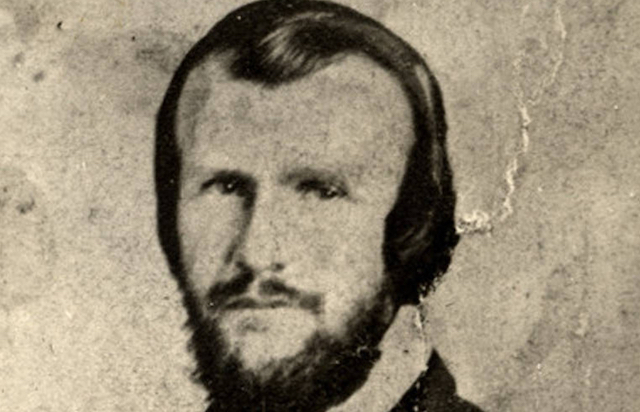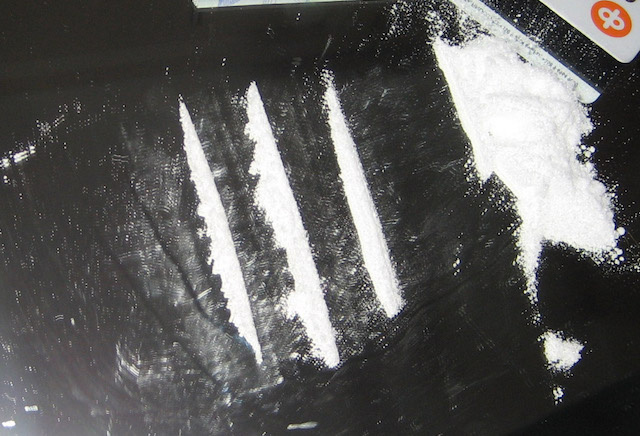Trial and error is one of the best ways to figure things out in life. You have an idea; you test it, and if it doesn’t work, you try something else. This works well with new recipes, math equations, and even relationships. But sometimes a person will test an idea that is just plain awful, and even if it turns out to be successful, the results will still be excruciating at best.
10. The Spiritualist Who Died to Prove Life After Death

Spiritualists, mediums, psychics and others have claimed for centuries that they can communicate with the spirits of the dead. Science says there is no evidence to support this, and over the years more than one of these avenues has been exposed as a complete scam. Still, people want to believe, and the idea persists. Sometimes the belief is so strong that people will do unthinkable things just to maintain it.
Thomas Lynn Bradford sought to prove the existence life after death back in 1921, when he closed the doors and turned on the gas in his heater, letting it fill his room until he suffocated. A spiritualist himself, Bradford believed wholeheartedly in the supernatural. He left a note saying that he was seeking to prove the phenomenon of spirits, and so his suicide had to be accepted with the caveat that he would return.
He conspired with a living partner to return from beyond. He didn't. His partner, neither a psychic nor someone he actually had a long-term relationship with, claimed she didn't even know Bradford was planning to die. But she didn't get ghost messages , and Bradford failed to change science as we know it, which was his ultimate goal.
9. Franz Reichelt tested his own parachute

There's an old joke about what the first person to eat an oyster must have been thinking. Some things just don't seem logical, like things no sane person would ever try. But when it comes to trying out a parachute for the first time, eating an oyster seems like child's play. At least gravity can't betray you when you're eating an oyster.
Franz Reichelt was a tailor and inventor who in 1912 felt he had created the perfect parachute. Of course, airplanes were still relatively new, and devising ways to make them safer was an even newer challenge. Reichelt thought that a device that would allow you to return safely to the ground was a great idea. And it was, in theory.
Despite testing his inventions on numerous mannequins from his own apartment window without success, Reichelt believed that the flaw was not in his design but in his height. So he climbed the Eiffel Tower to prove that it worked. Alas, it didn’t, and there is even a grim video failure when he conducted a test in front of an audience.
8. Flat-Earther Mike Hughes Tests Homemade Rocket
Flat Earthers became the buzzword of the internet a few years ago when people realized that there were people who genuinely believed the world was flat. And while many are dismissed as frivolous, or at least not worthy of serious attention, some are actually deadly serious. Mike Hughes was one of those people.
Daredevil and rocket enthusiast Mike Hughes also claimed that the Earth was flat. And he was going to prove it once and for all by building a rocket, taking to the skies, and seeing the flat disk of our world for himself. He had actually had success in the past with two previous rocket launches that had taken him to an altitude of just over 1,300 feet, and then to 1,800 feet. But his latest attempt, a steam-powered rocket of his own design, took place in 2020 The parachute mechanism failed and the rocket crashed, killing him.
The tragic irony, according to his public relations representative, was that he didn't actually believe in the flat earth theory at all, it was just a trick to raise money and attract press attention.
7. Horace Hunley died testing his own submarine.

As an inventor, you need to have confidence in your ideas. But a little practical caution is also a good idea, especially if your invention is a submarine and the year is 1863. Horace Hunley was trying to test his own submarine by passing under an anchored ship when the sub became stuck in mud .
The 40-foot submarine was operated by an eight-man crew and had previously successfully completed a test launch. Later, an accident caused it to dive with its hatch open, resulting in the death of six crew members. Finding a new crew was difficult, so Hunley stepped up to prove that his own creation was still safe and viable. He perished along with his entire crew.
Incredibly, the submarine was rescued and sent on another mission, where it became the first submarine to sink another ship in combat. On the way home, it sank, killing the third crew.
6. Troy Hurtubise invented the bear costume

No one could say Troy Hurtubise wasn't a showman, even if what he was doing was weird, suspicious, or just plain ill-conceived. The Canadian inventor made international headlines when a documentary about him hit the scene, chronicling his efforts to create a bear-proof suit.
Inspired by an alleged encounter with a real bear, in which the bear decided not to kill him outright, and the film "Robocop" , Hurtubise has created a massive, hulking suit that can withstand the brutal force of a bear. But how does a man test such a thing? He lets his friends beat yourself with sticks And giant logs . AND pickup .
There is no doubt that Hurtubise made a suit that could withstand a lot of testing. When it was taken out into the field for testing, it couldn't even walk in it, and he had to be helped to his feet.
5. Edwin Katsky's cocaine overdose

Not long ago, by and large, many of the drugs we thought of as dangerous drugs were simply used as medicine. Things like heroin and cocaine were ubiquitous in the pain-relief world, which meant that doctors had to understand them to some degree. Dr. Edwin Katsky knew about the effects of cocaine as early as 1936, but only in general terms. For example, neither he nor anyone else at the time had a clear idea of how much cocaine was too much cocaine. So he set out to find out.
Katski's plan was simply to document effects of cocaine on the human body. He dosed himself and then wrote down in a journal what he felt and experienced. Sounds reasonable enough, except that since we've already established that no one really knew how much was too much, Katski ended up massively overdosing.
As he died, he took notes. Some were as mundane as "eyes slightly widened," but one of the last, in a sloppy hand, was simply "paralysis ".
The notes were written on the walls of his office and were discovered with his body the following day.
4. Clement Vallandigham died testing a theory about how someone else died.

People love mysteries, and as the proliferation of true crime blogs has shown, we really do love murder mysteries. Sometimes, having to solve one can lead to an even greater tragedy.
In 1870, Thomas Meyer was playing cards when five men burst into the room. A fight broke out and shots were fired. Eventually, Meyer lost consciousness from a gunshot wound. In the melee, no one could say for sure who killed Meyer, but the prime suspect was a man who was known to hate him. However, that wasn’t enough for defense attorney Clement Vallandigham.
Vallandigham studied the case and came to a new conclusion. Witnesses heard a muffled shot before Meyer pulled out his gun. And if he had accidentally shot himself ?
Vallandigham set about testing his theory, working with gunpowder residue and other evidence. And he believed he had proven that it had happened, as he suspected, which is what he was trying to demonstrate to his friend. Unfortunately, he mistook his empty pistol for Meyer's still-loaded one and shot himself. in demonstration time.
Amazingly, the second man, while telling what happened to Vallandigham, also shot himself. But the man originally accused of shooting Meyer was acquitted, although he too was shot to death a few years later.
3. Nicholas Senn filled his butt with hydrogen

Have you ever heard that you can find a leak in a tire by putting soapy water on it to see where the bubbles are forming? It's a simple trick that can help you patch up a flat. But what happens when the leak isn't so much in the tire as it is in your colon? Well, there's a trick to find out, and one doctor discovered it by squirting hydrogen gas up your ass.
Dr. Nicholas Senn was treating patients during the Spanish-American War and was faced with a serious problem. Bullet wounds that had perforated the intestines were very difficult to treat. The perforations were difficult to find, and if the wounds were not treated quickly, a painful death was sure to follow. Senn came up with the idea of locating the wounds by filling the colon with harmless hydrogen gas.
Senn first experimented on dogs, and all the survivors recovered. This, of course, implies that others did not survive. But to determine how well the method worked, he did it and with yourself.
Despite the discomfort, he decided it wasn't that bad. And he continued to use the technique with great success, saving many lives until the invention of X-rays.
2. F-11 pilot shot himself down

Movie "Top Gun" convinced us all that pilots have a need, a need for speed. And speed is certainly a decisive factor when it comes to military aircraft. The MiG-25 can reach speeds of up to 3.2 Mach, which is the world speed record. And with every new supersonic plane comes a test pilot who has to see how it behaves when it flies faster than its screams when something goes wrong.
Back in 1956, Navy pilot Thomas Attridge was testing the new Grumman F-11 Tiger. He was combat testing a jet that could reach supersonic speeds, something its predecessors could not do.
At 20,000 feet above the Atlantic, Attridge fired his 20mm cannons, diving to 13,000 feet. From there, he accelerated the plane to supersonic speed and headed straight for altitude. 7000 feet to shoot again. And then someone shot at him.
Something pierced the windshield, and he slowed down, trying to return to base. The engines failed, and what he first thought was a bird turned out to be even stranger. In its rapid descent, the F-11 was outpacing its own bullets. It outran them and shot himself .
The plane crashed a mile from the base, but Attridge survived.
1. Michael Smith was intentionally stung by bees

Aposematism is the name given to the mechanism by which a living organism lets you know it’s dangerous simply by looking dangerous. Poison dart frogs are brightly colored to let predators know they’re bad news, and insects like bees have similar stripes. Animals instinctively know to avoid these things. But humans? Sometimes our own intelligence can work against us, and we seek out danger instead of avoiding it. Consider the case of Michael Smith .
Smith studies bees and has a PhD in neuroscience and behavior. His research focuses on how bee colonies work, but he's gotten stung once or twice along the way. Makes sense, right? And one session in particular saw a bee crawl into his shorts and sting him in a very sensitive spot. But what was unusual about it was that it didn't hurt as much as Smith thought it would. And that got him thinking, what's the most painful place a bee can sting a person?
No one else had a definitive answer, so he tested it on himself. He began exposing himself to bites, dozens of them, all over his body, in places like the top of his skull, his nipple, and his armpit. And his findings led him to one painful conclusion. A bee sting right in the nostril the most painful of all.














Оставить Комментарий